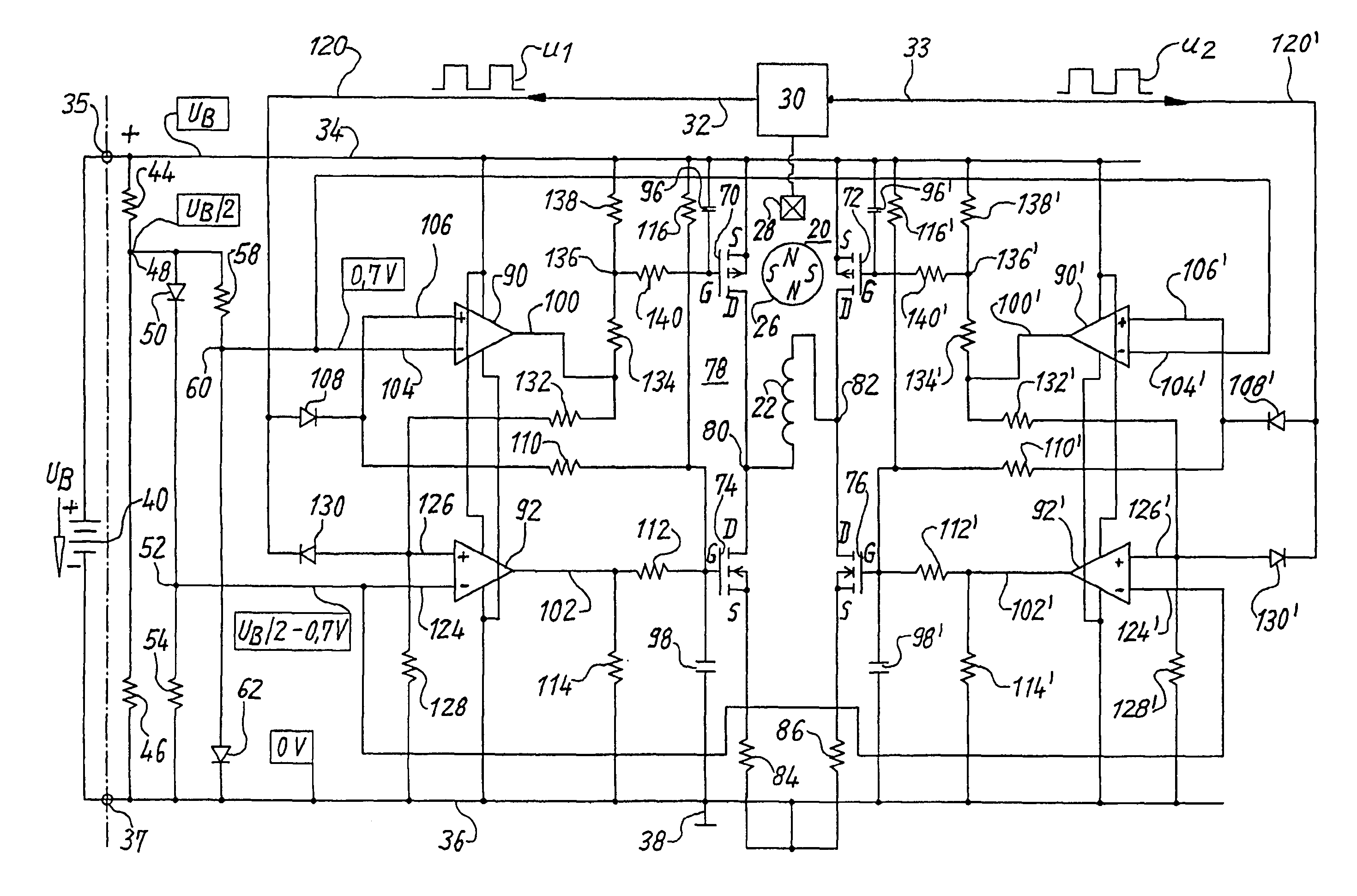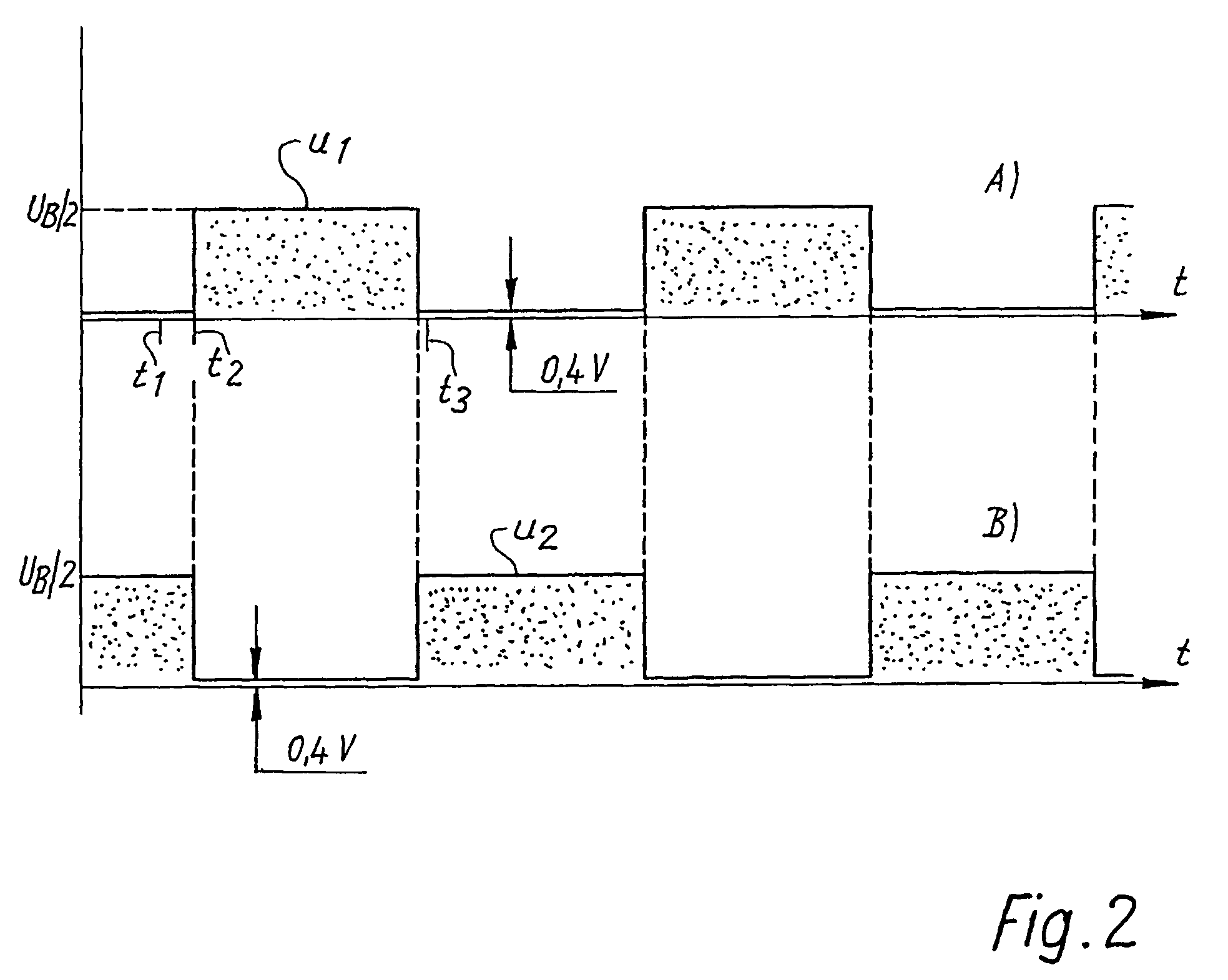Method for commutating an electronically commutated motor and motor for carrying out said method
a technology of electronically commutated motors and motors, which is applied in the direction of electronic commutators, synchronous motor starters, rotary current collectors, etc., can solve the problems of “wasted power output” and too expensive for many applications, and achieve reliable commutation, simple and inexpensive configuration, and increased power output of such a motor.
- Summary
- Abstract
- Description
- Claims
- Application Information
AI Technical Summary
Benefits of technology
Problems solved by technology
Method used
Image
Examples
Embodiment Construction
[0013]FIG. 1 shows, for explanation of the invention, a single-phase two-pulse electronically commutated motor 20 having a single stator winding phase 22, also having a permanent-magnet rotor 26 that is depicted as a four-pole rotor, and having a Hall generator 28 whose output signal is fed to an arrangement 30 having an output 32 and an output 33 antivalent thereto. In arrangement 30, the output signal of Hall generator 28 is converted into two square-wave signals u1 and u2, which are depicted in FIG. 2 and proceed in oppositely-phased fashion. These can, if necessary, be shifted in phase in known fashion as a function of the rotation speed of motor 20; this is not depicted.
[0014]Motor 20 is supplied with voltage via a positive connecting lead 34 and a negative connecting lead 36 that is usually connected to ground 38. Leads 34, 36 can be connected via respective connecting terminals 35 and 37 to a battery 40 whose voltage is labeled UB and is usually, in this case, in the range be...
PUM
 Login to View More
Login to View More Abstract
Description
Claims
Application Information
 Login to View More
Login to View More - R&D
- Intellectual Property
- Life Sciences
- Materials
- Tech Scout
- Unparalleled Data Quality
- Higher Quality Content
- 60% Fewer Hallucinations
Browse by: Latest US Patents, China's latest patents, Technical Efficacy Thesaurus, Application Domain, Technology Topic, Popular Technical Reports.
© 2025 PatSnap. All rights reserved.Legal|Privacy policy|Modern Slavery Act Transparency Statement|Sitemap|About US| Contact US: help@patsnap.com



